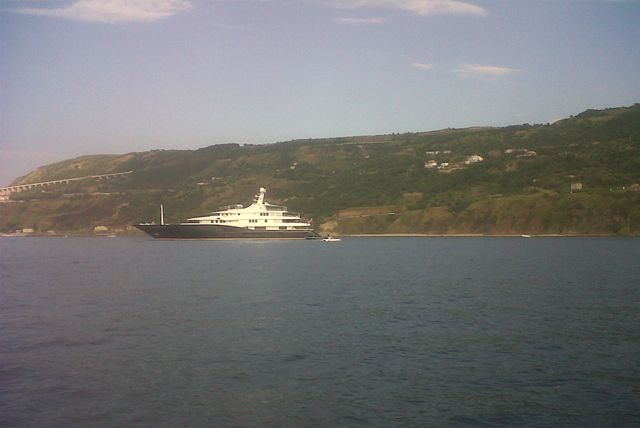Vibo Valentia Marina
In location not far from the nearby Trainiti Portosalvo, on an inlet as early as the Neolithic age were landing for Obsidian trade with Greek colonization in the same place, you built the port of Hipponion, 294a. C. 289 BC and it will be rafforzarto by Agathocles, who had conquered the city. In Roman times, further enlarged port is used as a naval base during the Punic Wars, civil wars and Macedonian. In the 6th-7th century was still active as evidenced by the letters of St Gregorio Magno to the Bishop of Vibona. Currently in the locality of Trainiti are visible above the water, the ruins of an ancient port, in particular the breakwater that extends for approximately 500 m from the coast. The current town of Vibo Marina instead, there was a smaller dock, with a settlement. The village of port stops being attended in the 7th century, life resumes in the 11th with the Normans.
The first modern urban core settlements date back to the early years of the 800, when at the Bay of Santa Venere anchored vessels and vessels related to the many tuna fishing activities (several traps along the coast active vibonese called "Costa degli Dei") and the marketing of timber greenhouses. The subsequent construction of a pier, immediately after the unification of Italy implemented the allocation of several families that were to form the first community. The arrival of the railroad (1889) and the construction of additional port facilities, accelerated the process of urban and industrial growth that saw around 50-60 of the last century on its peak. The presence of numerous industries (Italcementi, Nuovo Pignone, Snam, Agip Petroli, southern, etc.), he did catch a glimpse of the mirage of an industrialization that had to carry and spread the wealth.
The ancient name of Porto Santa Venere was later amended from 1931 (the first document where it is reported that name) in the current one of Vibo Marina (the capital had changed the name from Monteleone Calabro in Vibo Valentia in 1928). The November 17, 1951 wears out the tragedy of the Timpa Janca railway viaduct along the railway line Vibo Marina-Vibo Valentia-Pizzo-Miletus. In the sixties and seventies in particular, there has been, unfortunately, to the construction of hundreds of illegal buildings on owned property, especially in the locality of brush, where the beauty of nature was outraged by the building on the beach of horrendous individual households. On July 3, 2006 flooding due to an exceptional downpour causes extensive damage to industry, to tourism and in many homes. Most of the damage has been recorded in the brush. The flooding of many streams and Sant'Anna in particular, obstructed the construction of buildings, flooded the village and the adjacent village of mud, debris and water, exceeding in many places the meter in height. 3 dead was the price paid by the community, which still bears the marks and injuries.

Monumenti e luoghi d’interesse
- Diocesan shrine dedicated to Maria SS. del Rosario di Pompei
- Marzano Tower in viale Sen. Parodi Delfino
- Depths of Trainiti Roman Pier
- Castello di Bivona
- La Tonnara, future home of the Museum of Civilization Bivona
- Regional Marine Park "Costa degli Dei" Capocozzo − S grounds. Irene − − − Vibo Pizzo Capo Vaticano Tropea −


